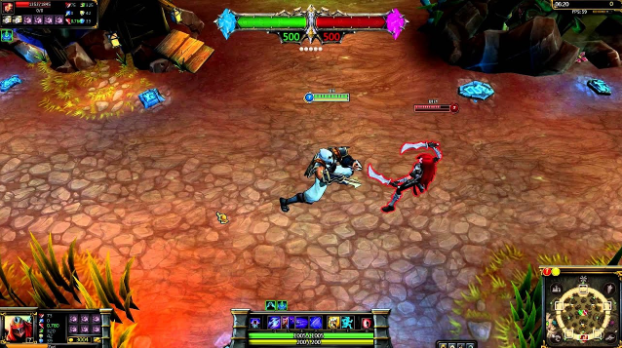In the world of puzzles, where riddles and crosswords reign supreme, there exists a game that stands out for its unique approach to mental gymnastics – the connections game nyt. Originating from the creative minds at The New York Times, this enigmatic puzzle has captivated solvers worldwide with its intricate web of associations and clever wordplay. In this comprehensive guide, we embark on a journey to explore the depths of the Connections Game, uncovering its rules, strategies, and cultural significance along the way.
Introduction to the Connections Game Nyt
The connections game nyt is not your typical puzzle-solving endeavor. It defies convention by challenging players to make unexpected connections between seemingly disparate elements. Each puzzle presents a grid of words or phrases, accompanied by cryptic clues that hint at the underlying theme or relationship. Solvers must use their wits to decipher these clues and uncover the hidden connections, leading to a satisfying “aha” moment when the puzzle finally clicks into place.
At its core, the Connections Game is a test of lateral thinking – the ability to approach problems from unconventional angles and make intuitive leaps of logic. It rewards creativity, intuition, and a keen eye for detail, making it a favorite among puzzle enthusiasts seeking a mental workout that goes beyond mere wordplay.
Understanding the Rules
To master the connections game nyt, one must first understand its rules and mechanics. Each puzzle consists of a grid containing a series of interconnected words or phrases, along with a set of clues that provide hints about the relationships between them. The goal is to identify these connections and fill in the grid accordingly, creating a cohesive web of associations that satisfies all the clues.
Unlike traditional crossword puzzles, which rely on straightforward definitions and wordplay, the Connections Game encourages solvers to think outside the box and draw upon their knowledge of diverse subjects. Clues may reference literature, history, pop culture, or even obscure trivia, requiring players to think laterally and make unexpected connections between disparate elements.
Deciphering the Puzzle Mechanics
Central to the allure of the connections game nyt is its intricate puzzle mechanics, which challenge solvers to unravel the hidden patterns and relationships embedded within each grid. At first glance, the grid may appear to be a random assortment of words, but upon closer inspection, a subtle network of connections begins to emerge.
Each clue serves as a breadcrumb, guiding solvers along the path to discovery. Some clues may be straightforward and direct, while others require a bit of lateral thinking to unravel. The key is to approach each clue with an open mind, considering multiple interpretations and exploring unconventional connections that may not be immediately obvious.
As solvers delve deeper into the puzzle, they begin to uncover the underlying themes and associations that tie the grid together. A word or phrase that initially seemed out of place may suddenly click into place, revealing its connection to other elements in the grid. It’s a thrilling journey of exploration and discovery, where every new revelation brings solvers one step closer to cracking the code.
Navigating the Challenge Levels
The Connections Game offers puzzles of varying difficulty levels, catering to both novice solvers and seasoned veterans alike. Beginners may start with simpler grids that provide a gentle introduction to the game’s mechanics, while advanced players can tackle more complex challenges that push the boundaries of their problem-solving skills.
In the beginner’s grid, clues are typically straightforward and easy to decipher, making it an ideal starting point for those new to the game. As solvers gain confidence and experience, they can progress to intermediate puzzles, which introduce more nuanced clues and require a higher level of deductive reasoning.
For the most daring adventurers, advanced challenges offer a formidable test of skill and strategy. These puzzles feature intricate grids and cryptic clues that demand a keen intellect and a sharp eye for detail. Yet, with perseverance and determination, even the most daunting puzzles can be conquered, leading to a sense of triumph and accomplishment that is uniquely satisfying.
Mastering the Art of Connection
Success in the connections game nyt hinges on the ability to make meaningful connections between seemingly unrelated elements. It requires a blend of creativity, intuition, and analytical thinking, as solvers navigate the intricate web of clues and uncover the hidden relationships that bind the grid together.
One key strategy for mastering the game is to approach each clue with an open mind, considering multiple interpretations and exploring unconventional connections that may not be immediately obvious. By thinking outside the box and embracing ambiguity, solvers can uncover new insights and make surprising discoveries that lead to breakthroughs in the puzzle-solving process.
Another essential skill is the ability to recognize patterns and themes within the grid. Often, seemingly disparate elements are linked by underlying motifs or concepts that provide clues to their connection. By identifying these patterns and drawing upon their knowledge of diverse subjects, solvers can unravel the puzzle’s mysteries and fill in the grid with confidence.
Ultimately, success in the Connections Game comes down to practice, patience, and a willingness to embrace the unknown. With each puzzle solved, solvers hone their skills and deepen their understanding of the game’s mechanics, leading to greater mastery and enjoyment in the quest for connection.
Insights into Puzzle Construction
Behind every great puzzle lies a masterful puzzle constructor who crafts the clues and grid with meticulous care and precision. In the world of the connections game nyt, puzzle construction is both an art and a science, requiring a keen understanding of language, logic, and human psychology.
The process begins with the selection of a theme or concept that will serve as the foundation for the puzzle. This theme provides the framework for the grid and guides the creation of clues that will lead solvers along the path to discovery. From literary references to historical events, the possibilities are endless, allowing constructors to explore a wide range of topics and subjects.
Once the theme is established, the constructor sets to work creating the grid, carefully selecting words and phrases that fit within the framework and contribute to the overall coherence of the puzzle. Each entry must be strategically placed to maximize the potential for connections and ensure a satisfying solving experience for players.
Next comes the crafting of the clues, which is perhaps the most challenging and rewarding aspect of puzzle construction. Clues must strike the perfect balance between clarity and ambiguity, providing solvers with enough information to make meaningful connections without giving away the answer outright. It’s a delicate dance of words and wit, where every phrase and nuance is carefully considered to ensure a fair and enjoyable solving experience.
As the puzzle takes shape, the constructor revises and refines each element, fine-tuning the clues and grid until they achieve a perfect balance of challenge and satisfaction. Finally, the puzzle is ready to be unleashed upon the world, where eager solvers await the opportunity to test their wits and unravel its mysteries.
Exploring Variations and Themes
One of the things that makes the Connections Game so endlessly fascinating is its versatility and adaptability to a wide range of themes and variations. From special editions commemorating holidays and cultural events to themed puzzles that explore specific subjects or concepts, there’s always something new and exciting to discover in the world of connection-making.
Special editions of the connections game nyt often coincide with major holidays such as Halloween, Thanksgiving, and Christmas, offering solvers a chance to celebrate the season with themed puzzles that reflect the spirit of the occasion. These puzzles may feature holiday-themed clues and imagery, providing a festive twist on the classic game.
In addition to holiday editions, themed puzzles offer solvers an opportunity to explore specific subjects or concepts in depth. From literature and history to science and pop culture, themed puzzles delve into a wide range of topics, challenging players to make connections and uncover hidden meanings related to the theme.
For example, a puzzle themed around famous literary characters might feature clues that reference classic novels and authors, while a puzzle centered on scientific discoveries could explore the interconnectedness of different fields of study and the impact of groundbreaking research. Whatever the theme, themed puzzles offer solvers a chance to immerse themselves in a world of exploration and discovery, where every clue is a stepping stone on the path to enlightenment.
Tackling Common Challenges
While the connections game nyt offers endless opportunities for exploration and discovery, it’s not without its challenges. From mental blocks and ambiguity in clues to time constraints and frustration, solvers may encounter a variety of obstacles on their journey to connection-making. Fortunately, with a bit of perseverance and the right strategies, these challenges can be overcome, leading to a more enjoyable and satisfying solving experience.
One common challenge that solvers may face is mental blocks, where they find themselves stuck on a particular clue or unable to make progress in the puzzle. When this happens, it’s important to take a step back and approach the problem from a fresh perspective. Sometimes, simply giving your mind a chance to rest and reset can lead to new insights and breakthroughs in the solving process.
Another challenge is ambiguity in clues, where the wording or phrasing of a clue leaves solvers unsure of how to proceed. In these situations, it can be helpful to break down the clue into its component parts and consider multiple interpretations. By exploring different possibilities and brainstorming potential solutions, solvers can often uncover the intended meaning and move forward with confidence.
Time constraints can also pose a challenge, especially for solvers who are racing against the clock to complete a puzzle. To manage time effectively, it’s important to prioritize clues based on their difficulty and potential impact on the overall solving process. By focusing on the most promising leads and avoiding distractions, solvers can maximize their efficiency and make steady progress towards solving the puzzle.
Ultimately, overcoming common challenges in the Connections Game requires patience, persistence, and a willingness to adapt to changing circumstances. By approaching each obstacle as an opportunity for growth and learning, solvers can develop the resilience and resourcefulness needed to conquer even the most daunting puzzles.
The Psychology Behind Puzzle Solving
Beyond the sheer enjoyment of solving puzzles, there’s a wealth of psychological benefits to be gained from engaging in the connections game nyt. From enhancing cognitive function to reducing stress and anxiety, the act of puzzle-solving offers a host of advantages for mental health and well-being.
One of the primary benefits of puzzle-solving is its ability to stimulate the brain and keep it sharp as we age. By challenging our cognitive abilities and encouraging us to think critically and creatively, puzzles help to maintain neural connections and prevent cognitive decline over time. Studies have shown that regularly engaging in mentally stimulating activities like puzzle-solving can reduce the risk of age-related cognitive decline and improve overall brain health.
In addition to boosting cognitive function, puzzle-solving has been shown to have a positive impact on mood and emotional well-being. The act of solving puzzles releases dopamine, a neurotransmitter associated with feelings of pleasure and reward, which can help to alleviate stress and promote a sense of accomplishment. This can be especially beneficial during times of high stress or anxiety, providing a welcome distraction and an opportunity to unwind and relax.
Furthermore, puzzle-solving offers a unique form of mindfulness meditation, where solvers can immerse themselves in the present moment and focus their attention on the task at hand. By engaging fully with the puzzle-solving process, solvers can experience a sense of flow – a state of deep concentration and effortless focus that brings a profound sense of satisfaction and fulfillment.
Overall, the psychological benefits of puzzle-solving are undeniable, offering solvers a fun and rewarding way to exercise their brains, reduce stress, and enhance their overall quality of life. Whether you’re tackling a challenging grid or enjoying a leisurely crossword, the act of puzzle-solving is sure to leave you feeling mentally refreshed and rejuvenated.
The Connections Community
One of the most rewarding aspects of the Connections Game is the sense of camaraderie and community that it fosters among solvers. Whether you’re solving puzzles alone or collaborating with friends and fellow enthusiasts, the connections game nyt offers a wealth of opportunities to connect with others who share your passion for puzzle-solving.
Online forums and communities provide a virtual meeting place for solvers to share tips, tricks, and strategies, as well as discuss their favorite puzzles and share in the thrill of solving. From dedicated puzzle-solving groups on social media to forums and message boards devoted to all things puzzle-related, there’s no shortage of opportunities to connect with like-minded individuals and forge lasting friendships.
Collaborative solving techniques, such as “crowdsourcing” and “puzzle parties,” allow solvers to pool their collective knowledge and expertise to tackle even the most challenging puzzles. By working together and leveraging each other’s strengths, solvers can overcome obstacles more quickly and efficiently, leading to a more rewarding solving experience for all involved.
Whether you prefer to solve puzzles solo or enjoy the camaraderie of a group setting, the Connections Game offers something for everyone. It’s a chance to connect with others, share in the excitement of discovery, and celebrate the joy of puzzle-solving together.
Notable Success Stories
Over the years, the connections game nyt has produced its fair share of legendary solvers – individuals whose passion, skill, and dedication have earned them a place in puzzle-solving history. From record-breaking solving times to memorable solving moments, these success stories serve as inspiration to puzzle enthusiasts everywhere.
One such success story is that of Margaret Puzzlenut, a retired librarian from New York City who discovered her love for puzzles later in life. Despite having no formal training in puzzle-solving, Margaret quickly rose to prominence in the Connections community, earning a reputation for her lightning-fast solving times and uncanny ability to make connections others might overlook.
Another notable success story is that of Alex Crossworder, a software engineer from Silicon Valley who turned his passion for puzzles into a lucrative career. After years of honing his skills and competing in puzzle tournaments, Alex became the reigning champion of the annual Connections Challenge, a prestigious event that draws the best and brightest solvers from around the world.
These success stories serve as a reminder that anyone can excel at puzzle-solving with enough dedication, perseverance, and passion. Whether you’re a seasoned veteran or a novice solver just starting out, the Connections Game offers endless opportunities for discovery, growth, and achievement.
Conclusion: Embracing the Connections Game Journey
In conclusion, the connections game nyt is more than just a puzzle-solving endeavor – it’s a journey of exploration, discovery, and connection-making that offers endless opportunities for intellectual stimulation and personal growth. From unraveling the hidden patterns of a complex grid to forging connections with fellow enthusiasts in the puzzle-solving community, the Connections Game offers a wealth of experiences and insights that enrich the mind and nourish the soul.
As you embark on your own Connections Game journey, remember to approach each puzzle with an open mind and a sense of curiosity, embracing the challenge and relishing the thrill of discovery. Whether you’re solving puzzles alone or collaborating with friends, savor the moments of insight and inspiration that come with each new revelation, and celebrate the joy of connection-making in all its forms.
So gather your wits, sharpen your pencils, and dive into the world of the Connections Game – an adventure awaits, filled with twists, turns, and surprises at every corner. Happy solving!
Frequently Asked Questions (FAQs)
What makes the connections game nyt unique?
The Connections Game stands out for its focus on making unexpected connections between seemingly unrelated elements, challenging players to think laterally and explore unconventional connections.
How can I improve my puzzle-solving skills?
To improve your puzzle-solving skills, practice regularly, and approach each puzzle with an open mind. Look for patterns and themes within the grid, and don’t be afraid to experiment with different solving strategies.
Are there online resources for practicing?
Yes, there are many online resources available for practicing puzzle-solving skills, including websites, forums, and apps dedicated to puzzles and brain teasers.
Can the game be enjoyed solo or is it better in a group?
The connections game nyt can be enjoyed both solo and in a group setting. Solving puzzles alone allows for deep concentration and personal reflection, while solving in a group can provide opportunities for collaboration and camaraderie.
What are some strategies for overcoming difficult puzzles?
Some strategies for overcoming difficult puzzles include breaking down clues into smaller components, looking for patterns and themes within the grid, and taking breaks to clear your mind and refresh your perspective.
Is there a specific time commitment required for solving puzzles effectively?
The time commitment required for solving puzzles effectively varies depending on the complexity of the puzzle and the individual solver’s skill level and experience. Some puzzles may be solved quickly, while others may require more time and effort to complete.
How do I know if I’m ready to progress to more challenging levels?
If you find yourself consistently solving puzzles with ease and looking for a greater challenge, it may be time to progress to more challenging levels. Trust your instincts and don’t be afraid to push yourself out of your comfort zone.
Are there any common misconceptions about the game?
One common misconception about the Connections Game is that it requires a high level of specialized knowledge or expertise to solve. In reality, anyone can enjoy the game regardless of their background or experience level.
How does playing the Connections Game compare to other puzzle activities?
While the connections game nyt shares some similarities with other puzzle activities, such as crosswords and riddles, its focus on making connections between seemingly unrelated elements sets it apart and offers a unique solving experience.
Can solving puzzles regularly have long-term cognitive benefits?
Yes, studies have shown that regularly engaging in mentally stimulating activities like puzzle-solving can have long-term cognitive benefits, including improved memory, concentration, and problem-solving skills.
Where can I find the latest updates and news about the Connections Game?
For the latest updates and news about the Connections Game, be sure to follow reputable puzzle blogs, forums, and social media accounts dedicated to puzzles and brain teasers. Additionally, keep an eye out for announcements from puzzle publishers like The New York Times, who frequently release new editions and themed puzzles for enthusiasts to enjoy.










